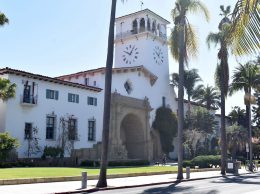Glendale court victory could mean big money for other cities
IN THIS ARTICLE
- Columns Topic
- Elijah Brumback Author
By Elijah Brumback Friday, April 10th, 2015

Elijah Brumback
A Sacramento Superior Court judge ruled in March that the city of Glendale is owed about $32 million in interest payments by the state of California on loans the city made to its former redevelopment agency.
This could be big news for cities throughout California that established redevelopment agencies, but later saw them dissolved by the state in 2011.
In the Glendale case, the state claimed the former RDA owed less than $1 million to the city, but the crux of that argument, as could be the case in a number of other cities, is that the loan accrued interest at a bargain basement rate.
The Local Agencies Investment Fund rate, or LAIF, is a variable rate that gets published every quarter and is an average of what municipalities get on their investments.
The way the state’s Department of Finance sees it, when the redevelopment agencies were retired, interest rates were determined by the LAIF rate at the moment — a historically low 0.28 percent. Thus, the state only owes Glendale about $1 million, Sacramento argued.
For cities with outstanding loans from a redevelopment agency, the state’s decision to lock the LAIF, which has gone as high as 12 percent over the past several decades, shorts cities’ investments big-time. If cities had their way, the state would have used a formula that calculates the interest based on the LAIF rate as it was published each quarter that a loan was outstanding.
Supporters of the decision point out that using a historically low fixed rate to pay back interest on what was a variable rate at the time of the loan is clearly unfair.
If the judge’s decision holds up, the redevelopment agency would pay the city $32 million over decades from collected property taxes that would otherwise be kept by other government entities, including the state.
However, Glendale’s victory could be short-lived. The state is expected to appeal the decision and there is an amendment, currently in the Assembly Budget Subcommittee, that would established 0.25 percent as the interest rate used for payment.
The amendment has its supporters and detractors and only time will tell if cities throughout the state will get a fair shake.
While cities have struggled to recover from the dissolution process and some valuable projects have hit what seem to be permanent roadblocks, efforts to develop new tools are in the works. And cities like Santa Barbara are finally starting to see the light at the end of the tunnel, as that city gets closer to finalizing its Long Range Property Management Plan for redevelopment agency properties.
“We’re getting waiting on a couple determinations from the Department of Finance for a couple of those properties,” said Sarah Knecht, assistant city attorney for city of Santa Barbara. “We’re winding down that activity and there are still some pieces of legislation pending that could help simplify the process. The city is pretty far along in its effort.”
Going forward, many cities are trying to established new infrastructure financing districts to make up some of the ground lost in the RDA dissolutions.
Thousand Oaks City Manager Scott Mitnick previously told the Business Times that the formation of a new infrastructure financing district might be able to complete some of the city’s now-shelved RDA projects. There, redevelopment officials saw about $20 million in bond proceeds taken by the state. Even though they were earmarked for use in redeveloping Thousand Oaks Boulevard, the funds hadn’t yet been committed to a specific contract.
In Santa Barbara, city officials are looking at the possibility of using land banked in the RDA era to support workforce housing projects. Modeled on projects such as the Cottage Hospital medium-density program on Santa Barbara’s east side, these are hybrid ownership programs. The city of Santa Barbara is expected to provide more details about its plans in the next few months; the plan could be highly attractive to middle class families earning $50,000 to $150,000 per year who still cannot afford an entry-level home or condo.
However, the biggest problems with both the IFD model and the city of Santa Barbara’s workforce housing plan are regulation and paperwork. To be economically viable, the programs have to work with predictable speed through planning and permitting. But with a booming real estate market, the incentive to develop affordable housing isn’t there, and the only program that really helped projects get off the ground was an RDA.
Developer Michael Towbes previously suggested that one way to speed the process along would be for Cottage to make its real estate documents available to the city to replicate in the development of its workforce housing program. Having a set of documents readily available could shave thousands of dollars from the costs of developing workforce housing.
The key to both is efficiently developing projects where the cost of design and permitting do not substantially undermine the original goal. Policy makers should keep operating efficiencies and overall costs in mind as they reinvent the RDA game.










